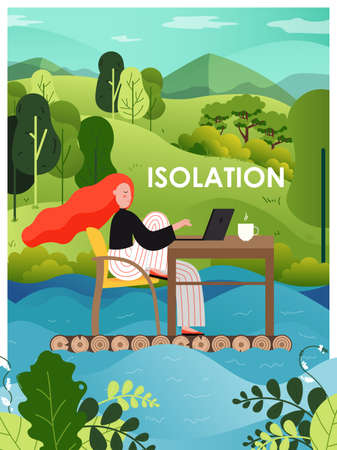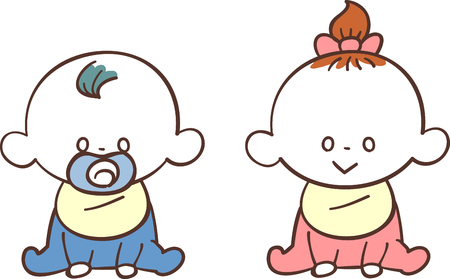Introduction: A Parent’s Peace of Mind
For new parents, few things are as precious—and as elusive—as peace of mind. The arrival of a baby brings immense joy but also a wave of worry, especially when it comes to their safety and well-being while they sleep. In American homes, this universal parental concern has driven the adoption and continuous evolution of baby monitors. What started as simple audio devices designed to catch a baby’s cry has transformed into an essential tool that reflects both technological innovation and the emotional needs of families. Today’s baby monitors offer much more than just sound; they promise reassurance through video feeds, movement sensors, and even artificial intelligence capabilities. This journey from basic listening devices to sophisticated AI-powered monitors is deeply intertwined with the desire for parents to feel connected and secure, even when they’re not in the same room as their little one.
2. Early Days: The Classic Audio Monitor
To truly appreciate today’s high-tech baby monitors, it’s important to look back at where it all started: the humble audio-only monitor. Introduced in the late 1930s and gaining widespread popularity in American homes by the 1980s, these simple devices marked a turning point in how parents cared for their little ones at night. Before baby monitors, new moms and dads relied on intuition, frequent check-ins, or simply leaving doors ajar to hear if their child needed attention. When audio monitors entered the scene, they brought a sense of security that was genuinely life-changing for many families.
These early models were straightforward: a transmitter placed near the crib picked up sounds and sent them wirelessly to a receiver carried by parents. Suddenly, families could relax in another room, watch TV, or even step outside for a moment without worrying about missing their baby’s cry. This new freedom reshaped nightly routines and household dynamics. Here’s a quick comparison of what life looked like before and after audio monitors became popular:
| Before Audio Monitors | With Audio Monitors | |
|---|---|---|
| Nighttime Check-ins | Frequent physical visits to the nursery | Remote listening from any room |
| Parental Anxiety | High—constant worry about missing baby’s cries | Reduced—confidence in being alerted to noises |
| Household Routine | Limited activities away from baby’s room | Greater flexibility in evening activities |
| Cultural Impact | Family gatherings centered near nursery | Living spaces used more freely at night |
The classic audio monitor didn’t just make parenting easier—it gave American families peace of mind and helped shape the modern idea of “sleeping through the night” both for babies and their caregivers. Even though these devices seem basic compared to today’s standards, their impact on family life was profound and paved the way for more advanced innovations down the road.

3. Video Arrives: Seeing is Believing
When video-enabled baby monitors hit the American market, they were nothing short of revolutionary. Parents could finally do more than just listen for cries—they could see their little ones in real time, whether from the kitchen or even while working from home. This visual connection brought an entirely new level of reassurance to families. No longer did parents need to tiptoe into the nursery and risk waking their baby just to make sure everything was alright. Instead, a quick glance at a small screen provided instant peace of mind.
The shift to video monitoring wasn’t just about convenience; it was about fostering trust and confidence in parenting decisions. Suddenly, parents could witness firsthand if their child had rolled over, kicked off a blanket, or was simply dreaming peacefully. This transparency reduced anxiety and gave caregivers more control, allowing them to respond appropriately without unnecessary interruptions. The ability to “see” rather than just “hear” became an essential part of modern American parenting.
Several factors fueled the rapid adoption of video monitors across the United States. For one, advances in affordable camera technology made these devices accessible for everyday families—not just a luxury for a select few. At the same time, cultural trends emphasizing safety and hands-on parenting amplified demand. As dual-income households and remote work became more common, American parents wanted tools that fit seamlessly into their busy lives while ensuring their children’s well-being around the clock.
4. Smart Features: Connectivity and Convenience
The leap from basic audio monitors to today’s smart baby monitors has been nothing short of revolutionary for families across the U.S. The integration of Wi-Fi, smartphone apps, and cloud-based technologies has fundamentally changed how parents connect with their little ones, offering a level of flexibility that was unimaginable just a decade ago.
With the introduction of Wi-Fi-enabled devices, parents are no longer tethered to a limited range or forced to carry bulky receivers around the house. Instead, they can check in on their babies from virtually anywhere—whether theyre in another room, at work, or even traveling. This newfound mobility has become a lifeline for working parents and caregivers who crave peace of mind without sacrificing their daily routines.
Smartphone integration is now a standard feature among leading baby monitor brands in America. By simply downloading an app, users gain instant access to high-definition video streams, two-way audio communication, and real-time alerts—all at their fingertips. This seamless connectivity means that grandparents and other family members can also stay involved in the babys life, no matter where they live.
Here’s a quick comparison of key features before and after smart technology became mainstream:
| Traditional Monitors | Smart Monitors | |
|---|---|---|
| Range | Limited (a few hundred feet) | Unlimited (Wi-Fi/Internet-based) |
| Device Access | Dedicated receiver only | Smartphones, tablets, computers |
| Alerts & Notifications | Audio cues only | Push notifications, video alerts, sound/motion detection |
| Family Sharing | No (single receiver) | Yes (multiple users/devices) |
| Remote Monitoring | No | Yes (anywhere with internet access) |
This evolution in connectivity has empowered U.S. families to stay closely connected to their children while balancing work, errands, or even social time. The convenience of remote monitoring has redefined what it means to “keep an eye on your baby,” helping parents feel more confident and supported throughout every stage of parenthood.
5. The AI Revolution: Smarter, Safer, and More Supportive
Today’s baby monitors are a world apart from the simple audio-only devices of decades past. The rise of artificial intelligence has brought about a revolution in how American parents connect with and care for their little ones. Modern monitors are now equipped with a suite of smart features that offer not only peace of mind but also valuable insights to support informed parenting.
Advanced Sleep Tracking
One of the most impressive advancements is AI-powered sleep tracking. These systems use computer vision and sensors to analyze your baby’s sleep patterns—tracking everything from movement and breathing to room temperature and light exposure. Many leading brands now offer detailed sleep reports right on your smartphone, helping parents understand nap routines and make adjustments for healthier sleep habits. For exhausted moms and dads, this kind of insight can be a game-changer, offering reassurance that your child is resting well—even during those unpredictable newborn months.
Cry Detection & Real-Time Alerts
No more guessing whether that soft whimper is just a dream or the beginning of a full-blown meltdown. With advanced cry detection algorithms, today’s monitors can distinguish between different types of sounds, sending real-time notifications when your baby truly needs attention. Some models even learn your child’s unique cries over time, reducing false alarms and allowing parents to respond faster and more accurately—something every American parent juggling work, home, and sleepless nights can appreciate.
Comprehensive Health Monitoring
Perhaps the most remarkable innovation is health monitoring. AI-enabled devices now track vital signs such as heart rate, oxygen saturation, and even body temperature—all without disturbing your sleeping baby. For parents worried about conditions like sleep apnea or SIDS (Sudden Infant Death Syndrome), these features provide an extra layer of security that was once unimaginable outside of a hospital setting. This technology empowers families to spot potential issues early and consult with pediatricians if needed, fostering greater confidence in their caregiving choices.
Impact on Modern Parenting in America
The integration of artificial intelligence into baby monitors is reshaping the American parenting experience. It’s not just about high-tech gadgets; it’s about making daily life safer, less stressful, and more supportive for families. Parents now have access to data-driven guidance that helps them make better decisions while strengthening their emotional connection with their children. As technology continues to evolve, so does the promise of smarter parenting—one that balances intuition with innovation for happier, healthier families across the U.S.
6. Looking Ahead: The Future of Baby Monitors
As baby monitors continue to evolve, American parents are looking beyond basic safety and convenience. The next generation of monitors will likely address a blend of high-tech innovation and real-life family needs. Privacy is fast becoming a central concern. With more devices connected to Wi-Fi and cloud services, parents want assurance that their family’s data—especially video and audio feeds—remain secure and private. We can expect future baby monitors to offer stronger encryption, user-controlled storage, and transparent privacy policies tailored for tech-savvy American households.
Another anticipated trend is deeper integration with smart home systems. Imagine seamlessly connecting your monitor to Alexa or Google Home, automating nursery lighting based on your baby’s sleep patterns, or receiving notifications across all your devices. For busy American families already juggling multiple smart gadgets, this kind of integration can be a game changer, streamlining routines and making parenting just a bit easier.
Perhaps most exciting is the move toward customized parenting insights powered by AI. Tomorrow’s monitors may not just alert you when your baby cries—they could analyze sleep cycles, track developmental milestones, or even offer evidence-based tips personalized to your child’s habits. This level of insight could empower parents with information they need to make confident decisions every day.
While technology will keep advancing, American parents will always value peace of mind and genuine connection over flashy features. As we look ahead, the most successful baby monitors will be those that combine cutting-edge innovation with practical support for real families—keeping children safe, respecting privacy, and making life just a little bit easier for every parent on the journey.

